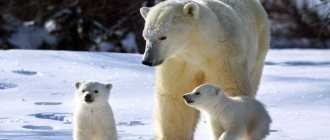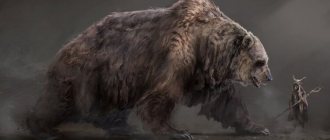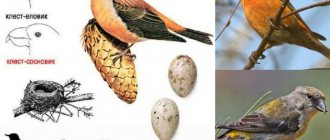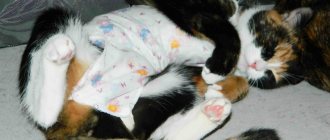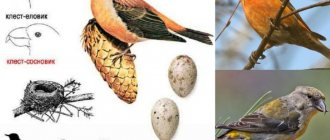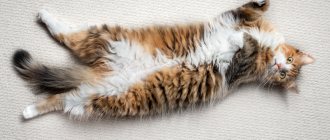Nature holds many mysteries, many things are still unsolved and inexplicable in it. And yet, with the passage of time, as a result of observations and experiments, humanity was able to answer some of them.
For example, why does a bear sleep in winter and do all species of these animals hibernate? How, under conditions of absolute lack of food, does an animal manage to preserve the vital functions of the body at the same level and continue to actively hunt after a long period of starvation? Why do brown bears fall into winter sleep, but their white relatives do not? This article will answer these and other questions.
Natural causes
The clubfoot's winter sleep is a result of evolution and a necessary measure. The bear is one of the largest animals on Earth. The weight of some individuals reaches 600 kilograms, while the stomach can hold up to 75 kg of food. In summer, finding such an amount of food is not a problem: there is fish in the rivers, and there are a lot of berries, mushrooms, pine cones, and fresh grass in the forest. It is a myth that the bear hunts large prey. He cannot do this due to his large weight and clumsiness, but he easily catches slugs, birds, and pulls eggs out of nests, because all bears up to 4 years old climb trees well, but with age they lose this ability due to obesity.
With the onset of cold weather, all this diversity disappears: fish go to the bottom, reservoirs become covered with ice, grass dries up, raspberries and strawberries disappear. The animal cannot feed on meat alone; its body is designed in such a way that it is more of a herbivore than a predator. Without hibernation, all the bears would die from exhaustion in winter. Thus, the main reason why a bear sleeps in a den in winter is the lack of food.
Appearance
The appearance of a brown bear is typical for a member of the bear family. The bear's body is powerful, with a hump between the front shoulder blades. The head is massive with small ears and eyes. The tail is short - 65 - 210 mm, barely visible from the fur. The paws are strong with powerful, non-retractable claws 8 - 10 cm long, five-toed plantigrade. There are many subspecies of brown bear, each with its own color and size. The largest bears are found in Alaska and Kamchatka (600 kg or more).
Body length varies from 2 - 3 m depending on the species. On the neck and chest of the cubs there are spots that are lighter than the rest of the fur, which disappear as the animal grows older. Brown bears, if they stand on their hind legs, reach a height of almost 3 meters. Bears, which are found in central Russia and the Caucasus, are smaller and weigh no more than 120 - 150. Males are slightly larger than females. The fur of a brown bear is very thick and evenly colored. Its shade depends on its habitat. The traditional color of bears is brown, brown is reddish.
Angry bear
Clubfoot, Mikhail Potapych, Toptygin - whatever they call the brown bear, the owner of our forests. Unfortunately, forests are being cut down and where the toptygins used to reign with might and main, now there is no trace of them. But there are still taiga and deciduous forests in which bears live. They managed to survive, despite the roads, towns and cities coming closer and closer to their habitats. Most bears live in Siberian forests, Kamchatka, Alaska and in national parks, where they are protected. Bears live alone, unable to tolerate each other's company.
Bears mark their territory in the forest by leaving characteristic marks on the trees. Having chosen a noticeable tree on the border of its property, the animal peels off the bark from it with its claws - for neighbors this is a sure sign “the place is occupied, don’t poke your nose in.” Clashes between adult males end in fights and opponents often inflict serious injuries on each other. This kind of fights happen at the end of May, during the mating season. These “cavaliers” fight for the favor of the bear. The winner stays with his chosen one for a couple of weeks, after which he retires again, not caring about the fate of his wife and future offspring.
Bears are gentle mothers. For three years they are inseparable from their cubs. They raise, educate and train them. For three winters, young bears sleep in the same den with their mother and only then scatter in different directions to become unsociable loners. The first bears appeared on Earth approximately 10 - 15 million years ago. For example, a giant cave bear once lived in Europe. It was much larger than all modern bears and ate mainly plants.
Preparing for hibernation
Three weeks before winter sleep, the bear begins to eat. These days he will eat three times more than usual. The main task at this stage is to gain as much fat as possible to survive the winter.
Pine cones help a bear gain weight quickly. The animal climbs trees after them or plunders the chipmunks' supplies, while the rodents themselves also become the clubfoot's meal.
Bears do not disdain carrion: large horned animals are taken away from predators. The bear does not leave the prey until it has eaten the entire carcass, covering the meat from prying eyes with branches and grass. Before hibernation, they eat a lot of fish, with preference given to fatty varieties.
Within three weeks of such a menu, the fat volume reaches 40% of the total body weight. A few days before bedtime, the bear begins to eat more modestly: he switches to plant foods and reduces the amount of food consumed by 3 times. This measure allows you to cleanse the stomach so that rotting processes do not begin in it during hibernation.
Bears fall into stupor, but not into suspended animation
During hibernation, serious changes occur in the bear's body: due to a decrease in body temperature, the concentration of carbon dioxide in the blood increases, and an increase in blood acidity in combination with other factors causes a slowdown in breathing and heart rate. Under the influence of hypoxia (lack of oxygen) and hypothermia (cooling), complete muscle relaxation and slight numbness occur.
This state of reduced functional activity of living organisms, caused by environmental factors, is called hypobiosis (and this is not the same as anabiosis; anabiosis is the suspension of the vital activity of the organism with subsequent restoration under favorable conditions).
The breathing and heart rate of a hibernating bear decreases four to five times, body temperature decreases by 2–7 °C, and the overall metabolic rate decreases by 50–70%. Due to fat reserves, large bears can exist in a state of sleep for several months. All this time, they maintain a constant high body temperature and basic physiological processes, maintain the activity of most tissues (wounds received before hibernation heal and new hair appears where the hair was damaged) and organs, as well as the constancy of the internal environment.
Features of hibernation in bears
The winter sleep of clubfoot is radically different from the hibernation of other animals. If a turtle, frog, hedgehog and marmot are in a comatose state: the body temperature drops to 0 degrees, there is almost no heartbeat, then for bears everything is different.
The bear's body temperature drops from 37 to 31 degrees Celsius. Metabolism slows down by 53%, the heart beats 9 times per minute (55 beats when awake). The bear does not fall into suspended animation in the full sense, it only dozes. For example, if it gets very cold, the animal will wake up and burrow deeper into the ground to keep warm.
The bear is the only hibernating animal that is capable of bearing offspring during this period. You have to give birth right in the den. 1 – 2 cubs are born, the female feeds them with her own milk, while she herself does not eat or drink. The cubs will suckle from their mother for up to 4 months.
Does a bear actually suck its paw?
Bears actually suck their paws. But only those that grow in captivity. And mostly bear cubs. But such a habit can remain in an adult animal. The reason is that cubs, once born, feed on their mother’s milk for a very long time. And if their birth coincided with the mother’s winter hibernation, then for several months the babies practically do not remove their nipples from their mouths. Moreover, the latter are located in the groin and armpits of the bear.
The cubs sleep on the soft mother's skin and do nothing but feed. Bear milk is very nutritious and fatty. Therefore, the cubs have enough of it for several months. Occasionally, the mother's nipples fall out of her mouth. There are sensitive receptors throughout the body of cubs that signal loss. Therefore, the kids do not remain hungry.
The cubs automatically poke at the mother's body until they find the nipple again. In captivity, cubs lack such maternal warmth, and they make up for it by sucking their own paws. Apparently, they associate this with the mother’s nipple, surrounded by hair. Moreover, the cubs spend several months in the arms of their mother. And in zoos they are not given 24/7 attention. And often they have to feel their loneliness.
Bear traffic jam
The final stage of preparation for hibernation is the formation of a fecal plug. This already happens when the bear falls into a den and falls into a half-asleep state. A few years ago, scientists claimed that the bear eats special food (wool, pine needles) in order to form a fecal plug that would close the anus and prevent waste products from leaving the intestines. So the animal’s digestive system processes these masses several times and turns them into proteins and moisture. However, thanks to video surveillance, it was possible to establish that there are no changes in the diet of the clubfoot, and the plug is formed as a result of accumulated feces, from which the intestines absorb all the liquid.
In the first hours after waking up, the congestion comes out of the anus on its own.
Sometimes a bear covers its butt with clay before hibernation: already in the den, it eats a lot of clay in order to remove the remaining food from the stomach. “Food” is processed and excreted by the intestines. The material is used not only for buttocks; clubfoot people cover their ears with it to prevent bugs from getting there.
Preparing a place to sleep
A bear's wintering area is called a den. This is a unique building with a microclimate. The den is built in such a way that heat is retained inside it even on very cold days. The shelter is built in a quiet place; the clubfoot takes a long time to find a suitable territory. The house should be located away from the holes of other animals. To build a shelter, bears choose areas near impassable swamps and windbreaks. Often a den is built under the roots of a fallen tree and covered with brushwood.
Another aspect that the bear pays attention to is that there should be no groundwater; humidity during hibernation is destructive.
The bear is an excellent builder. He insulates the walls of the home with dry branches, and lines the floor with moss. To check whether the bedding is soft and comfortable, the clubfoot will lie down on it and roll around, as if compacting it. If the “bed” turns out to be hard, then the owner of the den will add a little more “featherbed”. The home is made spacious, so that you can sit and stand in it. If the house is built by a female, then it is built twice as long as usual, because in the spring the she-bear will come out with her cubs.
The clubfoot may need to prepare for hibernation for more than a month. A den is built to last for many years; it happens that several generations use one dwelling. The bear lives in the house only in winter; in summer it does not even go there at night. The owner carefully monitors the “house”, he can seal the cracks with clay or other available materials, and re-floor the floor, because how long it will serve him depends on the care of the home.
How does a bear know it's time to go to bed?
Summer is the period of clubfoot activity. At this time, the forest is full of food, but in mid-August the air temperature drops, the nights become colder, and birds gather in flocks and fly away. Mishka sees these changes and understands that winter is just around the corner. Preparations for hibernation begin. Each type of bear can fall asleep at different times. Some may go to bed as early as the end of September, but most go on vacation in November.
A sleeping bear doesn't watch the clock and doesn't look out the window, but he always knows exactly when it's time to wake up. The role of an alarm clock is played by the animal’s body, which tells it that its vital reserves are running out and it’s time to refresh itself. Usually males are the first to leave the den; female bears leave the wintering area in mid-April.
connecting rod
Sometimes it happens that a bear wakes up not in spring, but in winter. This can happen for various reasons. Most often, the animal is awakened by a strong feeling of hunger, due to the fact that there was a lean year, and it was not able to accumulate the required amount of subcutaneous fat. A bear can be awakened by the barking of hunting dogs; after such stress, he will no longer be able to fall asleep, and will continue to walk and yell.
The connecting rod (the so-called bear that does not sleep in winter) is dangerous for humans. Hungry and angry, he scours the forest. It is impossible to find food in January-February: the rivers are covered with people, bushes and last year’s grass are hidden under a thick layer of snow. The clubfoot also cannot catch a wild boar or something larger, because due to its large weight it falls into the snow; while it gets out of the trap, the prey runs away.
Because of hunger, the connecting rod's instinct of self-preservation weakens, and the sense of danger disappears. The animal leaves the forest and comes close to a person’s home. Almost all bears that leave their dens in winter do not survive until spring: they die from exhaustion or at the hands of hunters.
Hairy and heavy
Without exaggeration, bears can be called the shaggy heavyweights among terrestrial mammals covered with fur. For example, an adult Alaskan brown bear (photo below) reaches a height of 3 m and weighs 700 kg! But this is not the limit. The largest bear in the world is considered to be the white polar bear. This animal exceeds 3 m in length, reaching a weight of 1 ton. Just think! This is how much old males weigh; middle-aged bears usually do not exceed 400-500 kg.
These predators are famous not only for their size, but also for their strong physical characteristics. A bear in nature has iron muscles, a thick layer of fat and warm fur. All this helps the predator survive winter with its prolonged frosts, for example, in the remote Siberian taiga. If we talk about polar bears, then these furry giants can swim about ten kilometers in icy water without much effort, because they are excellent divers. It is curious that when throwing into the water, the polar bear compresses its nostrils and ears, but leaves its small and blind eyes open. But let's return to the brown clubfoot.
Interesting facts about bear hibernation
The most amazing thing about clubfoot winter sleep:
- Only those species of bears that live in areas with a variable climate, that is, in areas where there is a sharp change in seasons, for example in Russia and Canada, hibernate. Representatives of these animals in China (pandas) or Antarctica (polar bears) are awake all year round;
- During winter sleep, the bear does not go to the toilet; the first bowel movement occurs a few days after the clubfoot couch potato awakens. But this does not mean that during hibernation the bear’s intestines are in a state of complete rest. The digestive system recycles the animal’s waste products, as a result of this process the body receives valuable proteins that help it survive without food until spring;
- A female bear's pregnancy always occurs during hibernation. The physiology of these animals is amazing: pregnancy can occur several months before sleep. The fertilized egg freezes, and when the mother's body plunges into winter slumber, the active development of the embryo begins. The cub is born while the female is sleeping;
- Newborn bears, born during hibernation, are completely naked. Their first fur grows just before leaving the den. The weight of the bear cub is 500 grams. It will increase rapidly every day. The mother feeds the cubs with rich milk and at the age of 4 months takes them out into the forest, gradually transferring them to the “common table” - teaching them to pick berries and eat herbs. Cubs begin to leave their mother only at the age of 4 years;
- The bear sucks its paw in the den not at all from hunger. Somewhere in mid-February, the animal's skin begins to peel off, the old coat itches very much and the bear wets its limbs with saliva, so it gets rid of the unpleasant sensation. The polar bear also has this habit - its paw begins to itch at the end of the Arctic winter;
- Clubfoots sleep very lightly. Males regularly look out of the den to check for predators or hunters nearby. If the “winter house seems” uncomfortable or unsafe, then the clubfoot can start making a new home right in the middle of winter and move into it. Usually a tree fallen to the ground becomes a new shelter. Under it, the bear puts brushwood and large branches and makes a clay floor. In such a den the bear can sleep until spring comes;
- A brown bear sleeps 1000 hours more per year than a human. Sometimes hibernation lasts 6 months;
- Hibernation for the Russian brown bear lasts from November to February-March. The animal spends approximately 120–135 days or 3240 hours in sleep. For the rest of the year, the bear practically does not sleep; it can only take a nap for no more than 4 hours on particularly hot days;
- The first week after waking up, bears eat all day long. Everything is eaten as food: tree bark, conifer cones, hay, young grass, fish and small animals. Ideally, the clubfoot's diet consists of 75% plant foods, the remaining 15% is meat and honey.
During hibernation, the bear's body becomes a closed system: it functions only due to accumulated fats and other nutrients. This feature allows animals to survive the winter without losses to their own health.
Bear den, its structure
The den serves not only as a shelter - it creates the necessary microclimatic conditions. The bear sleeps in its den from the end of November to the end of March–mid-April, a total of 5-6 months. How long a bear sleeps is influenced by the climate zone, gender and age of the animal.
In northern latitudes, most dens are dug in the ground, located on the slopes of ravines, dry streams, in impassable places - where there is a lot of windfall or next to impassable swamps.
Clubfoots dig their home for two or three days. The den consists of an entrance (brow), a hole and a place for lying down, the so-called den chamber. The roof is a layer of earth penetrated by the roots of various plants, which helps strengthen the earthen canopy and retain heat. Air access to the den is carried out through a hole that remains open even under the snow.
The floor is covered with bedding - dry grass, spruce branches, wood chips, moss. The further north the habitat is, the greater the layer of litter. In female bears, it serves as protection for future cubs, keeping them warm and preventing accidental squeezing, since it is springy. Therefore, females make it somewhat thicker than males.
Clubfoots living further south can go to sleep for the winter on the surface in secluded places - under snags, wide spreading paws of spruce trees, near an inverted stump.
